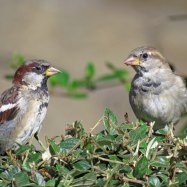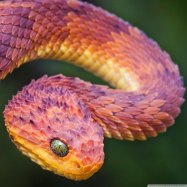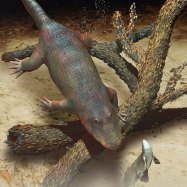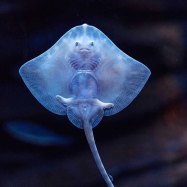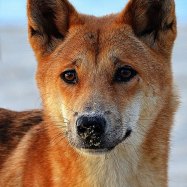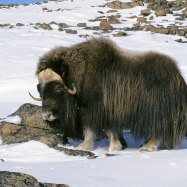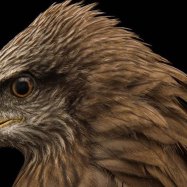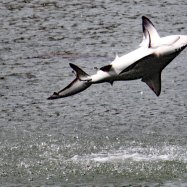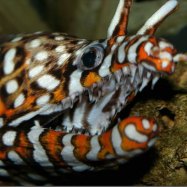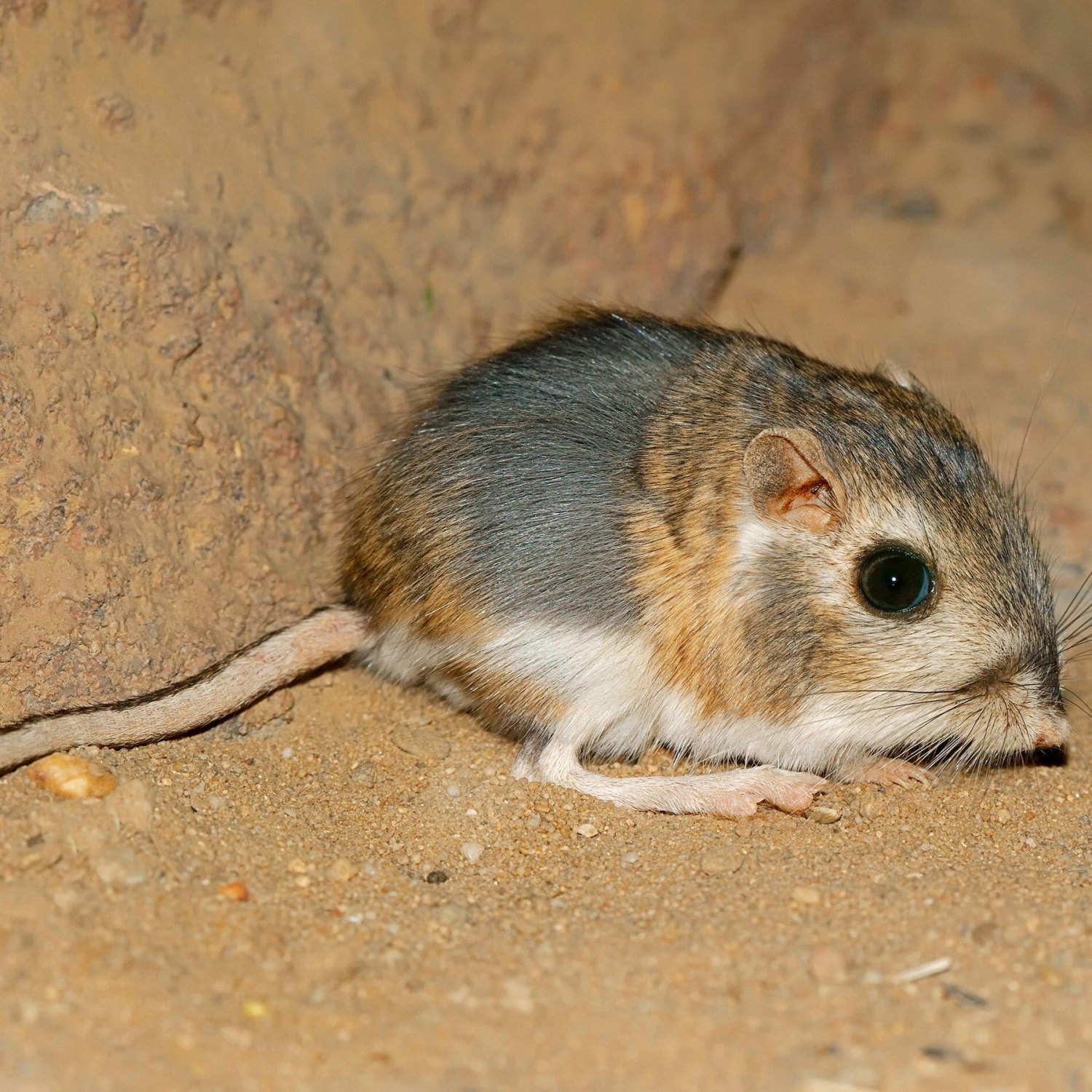
Kangaroo Rat
5 to 7 inches (excluding tail)
The Kangaroo Rat, found in the Southwestern United States and northern Mexico, is a small mammal with a unique body shape - small with long hind legs. It can grow up to 5 to 7 inches (excluding tail) and belongs to the Heteromyidae family. These rat-like creatures are fascinating to watch and have adapted to their desert environment by being able to survive without drinking water. #KangarooRat #Heteromyidae #SouthwesternUS #DesertAdaptation
Animal Details Summary:
Common Name: Kangaroo Rat
Kingdom: Animalia
Habitat: Desert and semi-arid regions
The Mighty Master of the Desert: The Kangaroo Rat
As the sun sets over the vast, dry desert landscape, a small but mighty creature emerges from its burrow. With its long hind legs and light brown fur blending perfectly with its surroundings, it seems like a creature out of a dream. But this is no imaginary creature – this is the kangaroo rat, a fascinating and unique animal found in the southwestern United States and northern Mexico.Scientifically known as Dipodomys, the kangaroo rat is a member of the rodent family, specifically in the Heteromyidae family Kangaroo Rat. The name "kangaroo rat" is derived from its unique body shape and movement, resembling that of a kangaroo. These creatures have captured the hearts and minds of many with their exceptional survival skills and endearing appearance.
From Desert to Semi-arid Regions: Habitat & Geographical Distribution
Kangaroo rats are mainly found in desert and semi-arid regions, making their homes in burrows dug into the sandy ground. They are primarily distributed throughout North America, with the United States being their country of origin. Within the US, they can be found in the southwestern regions, including California, Arizona, New Mexico, and Texas.In addition to the United States, kangaroo rats can also be found in the northern regions of Mexico, particularly in the Sonoran and Chihuahuan deserts. These habitats provide the perfect environment for these little mammals to survive and thrive.
A Herbivorous Lifestyle: Feeding Methods & Adaptations
Kangaroo rats are mainly herbivores, meaning they rely on plants as their primary source of food. They have special adaptations that allow them to survive in their harsh desert habitat, where food and water can be scarce Kea.Firstly, their diet consists of a wide variety of seeds, including mesquite, chia, and creosote bush seeds. They also consume small insects or fruits when available. With their well-developed cheek pouches, they can store food for later consumption, allowing them to survive for extended periods without needing to find more food.
Moreover, kangaroo rats have evolved to require very little water to survive, making them well-adapted to their arid habitat. They can conserve water in their bodies and produce concentrated urine, which makes them dependent on their diet for hydration. In fact, it is estimated that some species of kangaroo rats can survive without drinking any water at all.
Small but Mighty: Physical Characteristics & Body Shape
Despite their small size, kangaroo rats are remarkably athletic and agile creatures. They typically measure between 5 to 7 inches in length, excluding their long tails. Unlike most rodents, they have relatively long hind legs that aid in their swift movements.Their light brown or gray fur helps them blend in with their surroundings, making them difficult to spot by predators. They also have large, dark eyes that give them excellent vision, aiding in their nocturnal activities.
A Mighty Master of Burrow Building
Kangaroo rats are known for their impressive burrowing abilities, with complex underground tunnels and chambers forming their homes. These burrows provide shelter from the extreme temperatures of the desert, as well as protection from predators.Their burrow entrances are often surrounded by a pile of sand, which serves as an early warning system against predators. If an intruder attempts to enter the burrow, the sand will collapse, alerting the kangaroo rat inside.
Interestingly, kangaroo rats have also been observed building fake burrows as decoys to deceive predators. These false burrows are constructed away from their actual homes, and when approached by a predator, the kangaroo rat can escape to safety.
From Birth to Adulthood: Life Cycle & Reproduction
Kangaroo rats have a unique life cycle, with a gestation period of only 30 days, one of the shortest among mammals. After giving birth, a female kangaroo rat can become pregnant again within just a few hours. This efficient reproductive cycle allows them to produce multiple litters in a single year, increasing their chances of survival and perpetuating their species.Newborn kangaroo rats are blind and hairless, weighing only a few grams. They are fully weaned and independent within 6 weeks, and in the wild, their average lifespan is around 2-3 years. However, in captivity, they have been known to live up to 7 years.
Conserving the Mighty Masters of the Desert
The desert ecosystem is a delicate balance, and every creature plays a crucial role in maintaining its integrity. Unfortunately, human activities, including urban development and agriculture, have resulted in the destruction of the kangaroo rat's natural habitat.In addition to habitat loss, the introduction of non-native predators, such as cats and dogs, has posed a significant threat to the survival of these creatures. Furthermore, climate change has also had a severe impact, leading to extreme weather conditions that can be detrimental to the survival of the desert environment and its inhabitants.
It is essential to recognize the importance of the kangaroo rat and take steps to protect its habitat. Conservation efforts, such as habitat restoration and protection, can ensure the survival of these fascinating creatures for generations to come.
In Conclusion
The kangaroo rat may be small in size, but it is mighty in its survival skills and adaptability. With its unique physical characteristics and exceptional abilities, this desert-dwelling rodent is a master of its environment. As we continue to learn more about the fascinating world of the kangaroo rat, it is essential to protect and preserve its habitat, ensuring its rightful place as a vital part of the desert ecosystem.

Kangaroo Rat
Animal Details Kangaroo Rat - Scientific Name: Dipodomys
- Category: Animals K
- Scientific Name: Dipodomys
- Common Name: Kangaroo Rat
- Kingdom: Animalia
- Phylum: Chordata
- Class: Mammalia
- Order: Rodentia
- Family: Heteromyidae
- Habitat: Desert and semi-arid regions
- Feeding Method: Herbivorous
- Geographical Distribution: North America
- Country of Origin: United States
- Location: Southwestern United States and northern Mexico
- Animal Coloration: Light brown or gray
- Body Shape: Small with long hind legs
- Length: 5 to 7 inches (excluding tail)
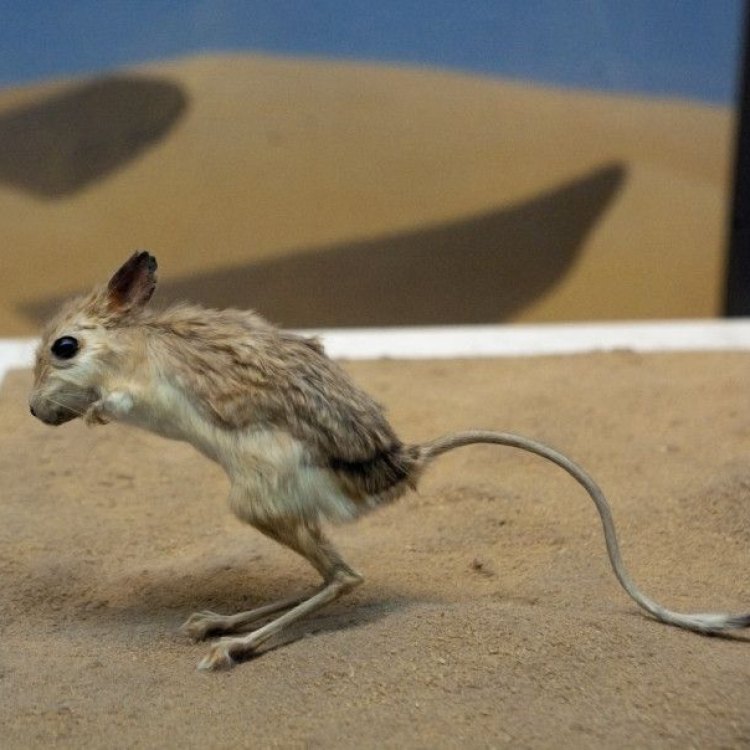
Kangaroo Rat
- Adult Size: Weight: 2 to 4 ounces
- Average Lifespan: 2 to 5 years
- Reproduction: Sexual
- Reproductive Behavior: Polygynous
- Sound or Call: Produces drumming sounds with their hind legs
- Migration Pattern: Non-migratory
- Social Groups: Solitary, but may form colonies
- Behavior: Nocturnal and highly agile
- Threats: Habitat loss and fragmentation, predation
- Conservation Status: Depends on the species
- Impact on Ecosystem: Seed dispersal
- Human Use: None
- Distinctive Features: Long kangaroo-like hind legs, large eyes, long tail
- Interesting Facts: Can hop long distances like a kangaroo
- Predator: Owls, snakes, coyotes, and other predators
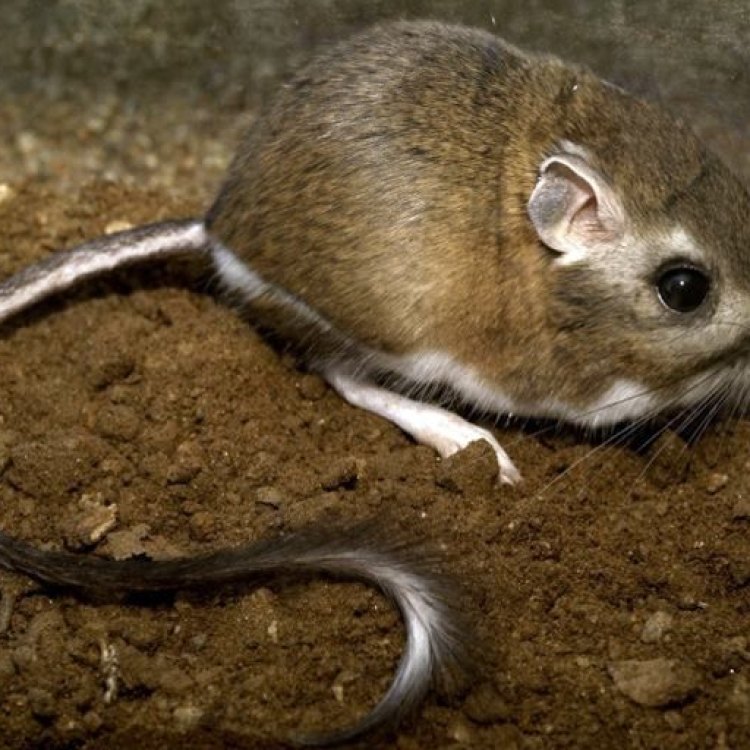
Dipodomys
The Fascinating World of the Kangaroo Rat: An Agile and Unique Rodent
When we think of kangaroos, we often picture the large marsupials hopping through the Australian outback. But did you know that there is a small rodent, which is equally fascinating and shares some similarities with its larger namesake? That's right, the kangaroo rat is a small but mighty rodent that is found in the deserts and grasslands of North America.Let's take a closer look at this incredible creature, examining its size, lifespan, reproduction, behavior, threats, and its impact on the ecosystem and why it's essential to protect these little-known critters.
A Miniature Marvel: Size and Lifespan
The kangaroo rat is a small rodent, weighing only 2 to 4 ounces and measuring around 6 to 8 inches in length, making it roughly the same size as a guinea pig PeaceOfAnimals.Com. However, what sets this creature apart from other rodents is its hind legs, which resemble those of a kangaroo and give it its name.When looking at the lifespan of the kangaroo rat, it's important to note that it varies depending on the species. On average, these furry creatures can live anywhere from 2 to 5 years. While this may not seem like a long time, compared to other rodents like rats and mice, it's quite impressive.
All About Reproduction and Social Behavior
Kangaroo rats have a unique reproductive behavior compared to other rodents. They are sexual and polygynous, meaning that males mate with multiple females, and females may have multiple partners. This mating system helps ensure genetic diversity within the species, making them more resilient to environmental changes.When it comes to social groups, kangaroo rats are generally solitary animals, only coming together during the mating season. However, they may form colonies in areas with abundant food resources Kouprey. These colonies are often short-lived and quickly break apart once the resources have been depleted.
The Nocturnal and Agile Kangaroo Rats
Kangaroo rats are nocturnal, which means they are most active at night. This enables them to avoid the harsh desert heat and predators. These rodents have highly sensitive hearing and large eyes, which are essential for navigating and foraging in the dark.But perhaps their most impressive feat is their incredible agility. With their powerful hind legs, they can jump up to 9 feet in a single leap, making them one of the most agile rodents in the world. This ability helps them escape predators and cover long distances in search of food and water.
Threats to the Kangaroo Rat and Conservation Status
Like many other species, the kangaroo rat faces threats in their natural habitat. The most significant threat to their survival is habitat loss and fragmentation caused by human development, including agriculture, urbanization, and road construction. These activities not only destroy their homes but also disrupt their ability to find food and mates.Another threat to the kangaroo rat is predation. These small creatures have many natural predators, including owls, snakes, coyotes, and other predators. With their excellent agility and ability to burrow underground, they can sometimes escape these predators. However, their population size also plays a significant role in their ability to thrive in the face of predation.
Kangaroo rats are also facing threats from climate change, which is causing temperatures to rise in their already dry habitat. This increase in temperature can lead to a decrease in food and water availability, making it challenging for these rodents to survive.
The conservation status of kangaroo rats is dependent on the species. For instance, the Ord's kangaroo rat is listed as an endangered species due to habitat loss and fragmentation. The San Diego kangaroo rat, on the other hand, is listed as a vulnerable species. It's crucial to monitor and protect these species to ensure their survival and prevent any further decline in their populations.
The Invaluable Role of the Kangaroo Rat in the Ecosystem
Despite their small size, the kangaroo rat plays a crucial role in their ecosystem. Their main contribution comes from their unique ability to disperse seeds. As they forage for food, they unintentionally carry seeds with them, and when they deposit their waste, these seeds grow into new plants. This process helps maintain the balance of plant species in their habitat and supports other animals that rely on these plants for food and shelter.Moreover, the burrows created by kangaroo rats also have a positive impact on the ecosystem. These burrows provide shelter for other animal species, including insects, reptiles, and small mammals. They also help aerate the soil and aid in water retention, making it easier for plants to thrive and preventing soil erosion.
Fun and Surprising Facts about the Kangaroo Rat
In addition to their unique features and behavior, there are some fun and surprising facts about kangaroo rats that you may not know.Did you know that kangaroo rats can hop up to 9 feet in a single leap? As mentioned earlier, this makes them one of the most agile rodents in the world, and they can cover long distances in a matter of seconds.
Another impressive fact is that kangaroo rats do not need to drink water. These desert dwellers can obtain all the moisture they need from the food they eat, making them highly adapted to their dry environment. This ability also enables them to survive for extended periods without access to water.
Protecting and Appreciating the Kangaroo Rat
It's essential to protect and appreciate all species, big or small, as each one plays a crucial role in maintaining the balance of our ecosystem. The kangaroo rat may not be a well-known animal, but it is a fascinating and unique creature that is a vital part of its environment.To ensure the survival of kangaroo rats, we must take action to protect their habitats, reduce fragmentation, and minimize human impact on their natural way of life. It's also crucial to spread awareness and appreciation for these incredible rodents, as they contribute to the biodiversity of our planet.
In conclusion, the kangaroo rat is a small but mighty creature that deserves our attention and protection. From its kangaroo-like hind legs and agility to its role in seed dispersal and ecosystem maintenance, this rodent is a fascinating and essential part of the North American deserts and grasslands. Let's work together to ensure that these unique and remarkable animals continue to thrive in the wild, and we can continue to admire and learn from their resilience and adaptations.
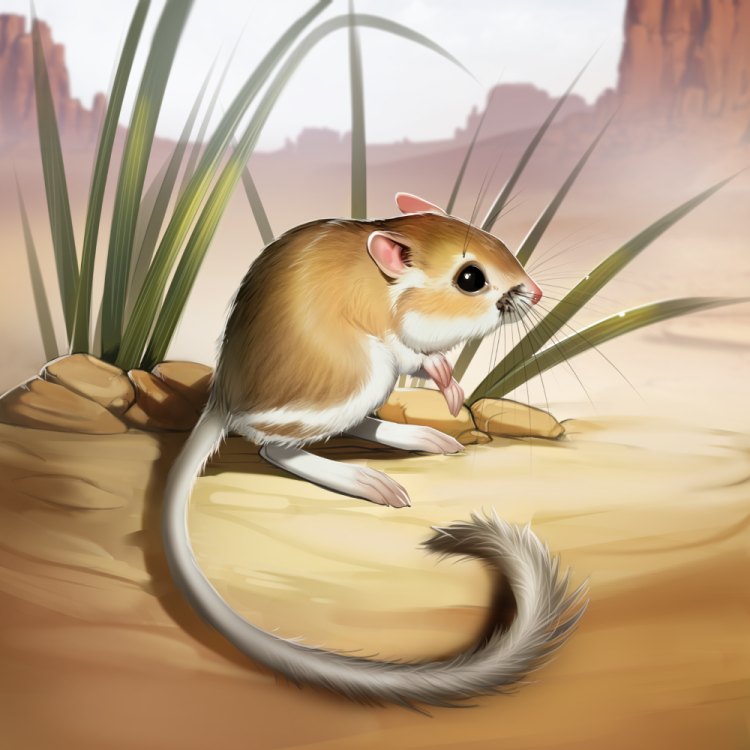
The Mighty Master of the Desert: The Kangaroo Rat
Disclaimer: The content provided is for informational purposes only. We cannot guarantee the accuracy of the information on this page 100%. All information provided here may change without prior notice.

